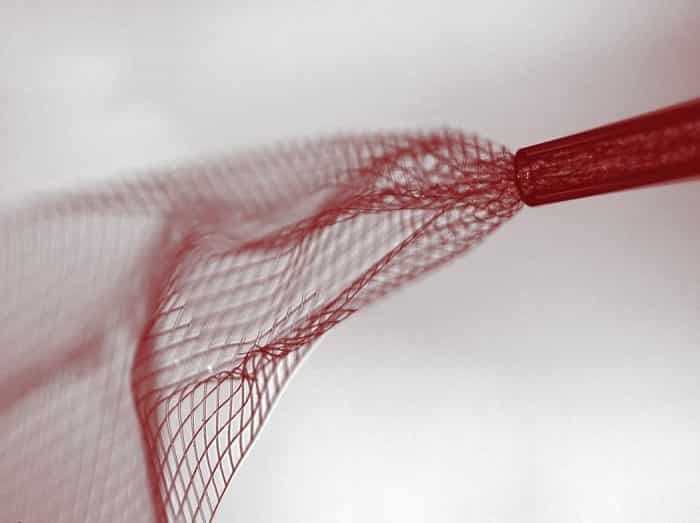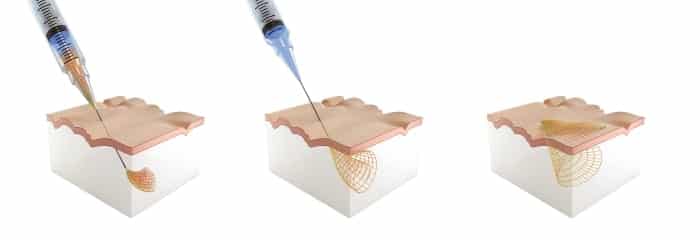‘Injectable electronic’ medical mesh could treat neurodegenerative diseases in futureIn future neurosurgeons might inject electronic devices directly into brain to treat paralysis and other neurodegenerative diseasesNovel method of Injectable Electronic Medical Mesh:
However, this is a proven scientific method which has been developed by a group of international researchers and Mark Hyman, a Junior Professor of Chemistry, led by Professor Charles Lieber of Harvard University.
Novel method of Injectable Electronic Medical Mesh:
An international group of researchers led by Lieber have developed a method of creating nano scale electronic medical scaffold that can be injected into animal bodies via syringe. The miniature scaffolding is able to spread itself and amalgamate with the existing tissue of the brain, here the neurons easily accept the new mesh as their support rather than considering it as an alien and rejecting it. These mesh or scaffolds can be further connected to devices which can then monitor the neural activity as well as stimulate the tissues or even boost regeneration of neurons. Researchers say that their future plans include to experiment the same method with huge meshes and more sensors. This new method pioneered by Leiber et al not only holds promise to treat neurodegenerative diseases like paralysis but it also can help in mapping the brain in much more details. Though the method has been proved to treat the neurodegenerative diseases in test mice; scientists believe that if they can prove the method to be safe for humans then Parkinson’s disease is definitely among the first ones which could be treated using this novel method. The research study has been published in Nature Nanotechnology, June 8th edition. Leiber says: “For the past thirty years, people have made incremental improvements in micro-fabrication techniques that have allowed us to make rigid probes smaller and smaller, but no one has addressed this issue – the electronics/cellular interface – at the level at which biology works.” Lieber’s team comprised of internationally renowned neuro scientists, chemists and physicists. Researchers who have given their contribution in the study include Jia Liu, Tian-Ming Fu, Zengguang Cheng, Guosong Hong, Tao Zhou, Lihua Jin, Madhavi Duvvuri, Zhe Jiang, Peter Kruskal, Chong Xie, Zhigang Suo, and Ying Fang. Earlier deep brain stimulation have been used to treat a variety of brain diseases; however using the nano fabricated scaffold technique is very much novel. Leiber feels his method could prove to be a milestone in the field of future neuroscience. Leiber added: “Existing techniques are crude relative to the way the brain is wired. Whether it’s a silicon probe or flexible polymers … they cause inflammation in the tissue that requires periodically changing the position or the stimulation. But with our injectable electronics, it’s as if it’s not there at all. They are one million times more flexible than any state-of-the-art flexible electronics and have sub-cellular feature sizes. They’re what I call ‘neurophilic’ — they actually like to interact with neurons.” As per the report from Phys.org, Lieber said: “I do feel that this has the potential to be revolutionary. This opens up a completely new frontier where we can explore the interface between electronic structures and biology.” For ages scientists have been puzzled by the mind boggling power of individual brain cells which have the capacity of cognitive power that includes various emotions and perceptions. Lieber and his entire international group of researchers are now focused on solving this mystery of neuroscience by using their new mesh. As per Lieber the new medical mesh made up of extremely soft and flexible silk and has almost 95 percent free space which the brain tissue can easily accommodate and rearrange into. While speaking to Nature, director of the Neurotechnology Centre at Columbia University in New York, Rafael Yuste said: “I think it’s great, a very creative new approach to the problem of recording from large number of neurons in the brain.” The technique is still in its early stages of development and researchers are not yet confident that the technique is safe to be applied on humans. On the other hand, Jens Schouenborg, head of the Neuronano Research Centre at Lund University in Sweden is working on developing a gelatin based ‘needle’ for delivering electrodes in the brain. Schouenborg says he would want to check more evidence of the long term compatibility of the technique in human body. For now, a provisional patent on the technology has been filed for by the Harvard’s Office of Technology Department. Leiber said: “The idea of being able to precisely position and record from very specific areas, or even from specific neurons over an extended period of time — this could, I think, make a huge impact on neuroscience.”

